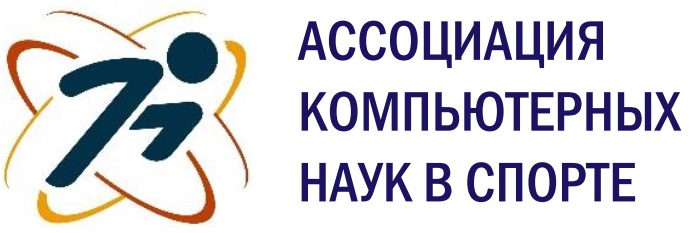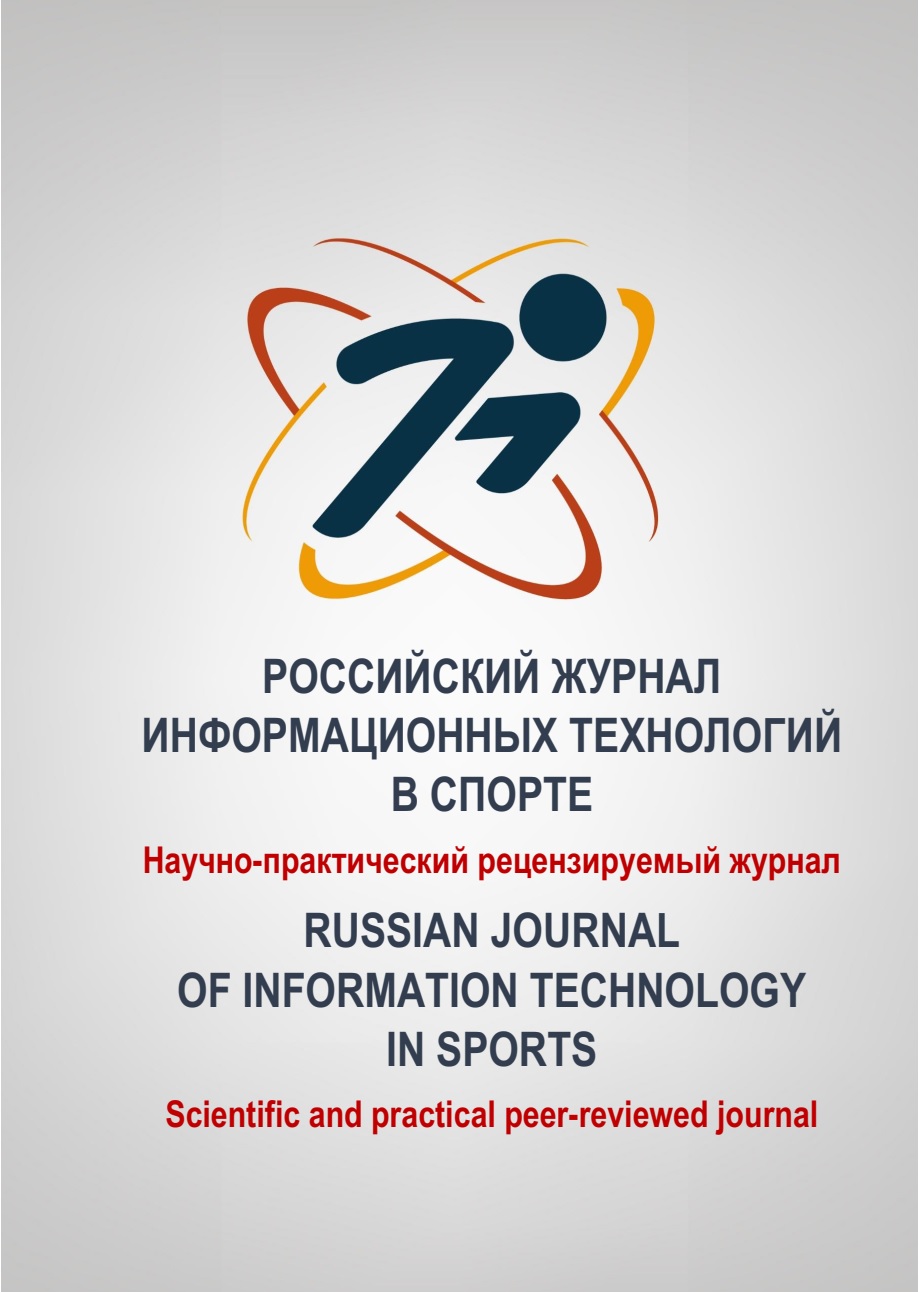Moscow, Russian Federation
VAK Russia 5.8.4
VAK Russia 3.3.7
VAK Russia 2.2.12
UDC 355.233.22
UDC 612.766.1
UDC 621.45.026.5
CSCSTI 77.00
CSCSTI 89.57
Russian Classification of Professions by Education 32.00.00
Russian Classification of Professions by Education 24.03.01
Russian Classification of Professions by Education 31.08.25
Russian Library and Bibliographic Classification 58
Russian Library and Bibliographic Classification 75
Russian Trade and Bibliographic Classification 5
Russian Trade and Bibliographic Classification 4618
BISAC COM074000 Hardware / Mobile Devices
BISAC HEA039100 Diseases / Musculoskeletal
BISAC HEA007000 Exercise
Relevance. Prolonged exposure to weightlessness causes serious violations of the functions of the physiological systems of the body: redistribution of fluids in the cranial direction, loss of bone and muscle mass, decreased aerobic performance, orthostatic intolerance, space motion sickness. These effects make it difficult to adapt to the conditions of Earth's gravity and pose a critical risk for future interplanetary missions (to the Moon, Mars), where assistance to the crew at the landing site is impossible. Goal. To systematize modern software and hardware tools for the prevention of negative effects of weightlessness currently used on the International Space Station (ISS), with an emphasis on the Russian segment, and to evaluate their effectiveness. Methods. Comparative assessment of Russian (BD-2, WB-3M, “Chibis”, etc.) and international (ARED, CEVIS, T2) preventive measures on the ISS, review of training programs (the Russian system for preventing the negative effects of weightlessness with an emphasis on performing natural locomotion - walking and running; NASA program with the predominance of strength training) and scientific literature. Results. Physical training is the basis for the prevention of negative effects of weightlessness: - on a treadmill with axial loading, it is a key tool for maintaining the functions of the cardiovascular system, aerobic performance, orthostatic stability and the ability to perform natural locomotion - walking and running. Running in the "passive" mode of treadmill movement and fast running are especially effective; on a strength trainer - the most effective remedy against bone loss and muscle atrophy (the main training tool of NASA); - on the bicycle ergometer - they support the aerobic/anaerobic capabilities. Additional means in the Russian countermeasure system are: occlusal cuffs used at the initial stage of the flight; muscle stimulators and a support unloading compensator, which are used at the request of the cosmonaut during the flight; a suit for creating negative pressure on the lower body (pneumatic vacuum suit "Chibis"), used at the final stage of the flight; water-salt additives and an anti-overload The Centaur anti-g suit. When comparing the approaches, it was revealed that the Russian system focuses on performing natural locomotion - walking and running on a treadmill, while the system of NASA partners focuses on cycling (CEVIS cycle ergometer) and strength training (ARED strength trainer). Conclusions. Existing means and methods of prevention of negative effects of microgravity, based on performing physical training on special simulators, significantly mitigate the negative effects of weightlessness on the ISS. The Russian approach to preventing the negative effects of weightlessness consists primarily in performing natural locomotion - walking and running, with an emphasis on fast running and running in the "passive"mode of treadmill. The international partners on the ISS focus on performing cycling and strength training. Nevertheless, the problem of protecting the human body from the negative effects of weightlessness has not been completely solved, no system guarantees complete prevention of physiological changes and rapid readaptation to gravity. For future interplanetary missions, it is necessary to further optimize training protocols and develop new methods of dosing and load adjustment using modern information technologies.
prevention of negative effects of weightlessness, physical exercise, BD-2 treadmill, ARED resistance trainer, artificial intelligence in space medicine
1. Grigoriev A.I., Orlov O.I., Baranov V.M. Space medicine: scientific foundations, achievements and challenges. Bulletin of the Russian Academy of Sciences, 2021, 91(11), pp. 1036-1040. (in Russ.) DOI: https://doi.org/10.31857/S0869587321110050 EDN: https://elibrary.ru/vhzffv
2. Kotovskaya A.R., Koloteva M.I. Manifestation of cardiovascular system detraining during the return to Earth after weightlessness. Aerospace and Environmental Medicine, 2016, 50(1), pp. 13-16. (in Russ.) EDN: https://elibrary.ru/vpayln
3. Iwase S., Tanaka K., Sugenoya J., Takada H., Miwa N., Nishimura N., Mukai C. Effects of microgravity on human physiology. Beyond LEO-Human Health Issues for Deep Space Exploration, IntechOpen, 2020. DOI: https://doi.org/10.5772/intechopen.90700
4. Marshall-Goebel K., Laurie S.S., Alferova I.V., Arbeille P., Aunon-Chancellor S.M., Ebert D.J., Stenger M.B. Assessment of jugular venous blood flow stasis and thrombosis during spaceflight. JAMA Network Open, 2019, 2(11), pp. el915011. DOI: https://doi.org/10.1001/jamanetworkopen.2019.15011
5. Vernice N.A., Meydan C., Afshinnekoo E., Mason C.E. Long-term spaceflight and the cardiovascular system. Precision Clinical Medicine, 2020, 3(4) pp. 284-291. DOI: https://doi.org/10.1093/pcmedi/pbaa022
6. Norsk P. Adaptation of the cardiovascular system to weightlessness: surprises, paradoxes and implications for deep space missions. Acta Physiologica, 2020, 228(3), pp. e13434. DOI: https://doi.org/10.1111/apha.13434
7. Aubert A.E., Larina I., Momken I., Blanc S., White O., Kim Prisk G., Linnarsson D. Towards human exploration of space: the THESEUS review series on cardiovascular, respiratory, and renal research priorities. npj Microgravity, 2016, 2(1), pp. 1-9. DOI: https://doi.org/10.1038/npjmgrav.2016.31
8. Norsk P., Asmar A., Damgaard M., Christensen N.J. Fluid shifts, vasodilatation and ambulatory blood pressure reduction during long duration spaceflight. The Journal of Physiology, 2015, 593(3), pp. 573-584. DOI: https://doi.org/10.1113/jphysiol.2014.284869
9. Moore A.D., Downs M.E., Lee S.M., Feiveson A.H., Knudsen P., Ploutz-Snyder L. Peak exercise oxygen uptake during and following long-duration spaceflight. Journal of Applied Physiology, 2014, 117(3), pp. 231-238. DOI: https://doi.org/10.1152/japplphysiol.01251.2013
10. Juhl O.J., Buettmann E.G., Friedman M.A., DeNapoli R.C., Hoppock G.A., Donahue H.J. Update on the effects of microgravity on the musculoskeletal system. npj Microgravity, 2021, 7(1), pp. 28. DOI: https://doi.org/10.1038/s41526-021-00158-4
11. Smith S.M., Heer M.A., Shackelford L.C., Sibonga J.D., Ploutz-Snyder L., Zwart S.R. Benefits for bone from resistance exercise and nutrition in long-duration spaceflight: evidence from biochemistry and densitometry. Journal of Bone and Mineral Research, 2012, 27(9), pp. 1896-1906. DOI: https://doi.org/10.1002/jbmr.1647
12. Kozlovskaya I.B., Yarmanova E.N., Yegorov A.D., Stepantsov V.I., Fomina E.V., Tomilovskaya E.S. Russian countermeasure systems for adverse effects of microgravity on long-duration ISS flights. Aerospace Medicine and Human Performance, 2015, 86(12), pp. A24-A31. (in Russ.) DOI: https://doi.org/10.3357/AMHP.EC04.2015 EDN: https://elibrary.ru/xmxevx
13. Kukoba T.B., Novikov V.E., Babich D.R., Lysova N.Y., Gordienko K.V., Fomina E.V. Preventive Efficiency of Resistive Exercises for the Bone System of Cosmonauts in Repeated Long-Duration Space Missions. Human Physiology, 2019, 45, pp. 759-763. DOI: https://doi.org/10.1134/S0362119719070107
14. Koschate J., Drescher U., Werner A., Thieschafer L., Hoffmann U. Cardiovascular regulation: associations between exercise and head-up tilt. Canadian Journal of Physiology and Pharmacology, 2019, 97(8), pp. 738-745. DOI: https://doi.org/10.1139/cjpp-2018-0742
15. Lackner J.R., DiZio P. Space motion sickness. Experimental Brain Research, 2006, 175, pp. 377-399. DOI: https://doi.org/10.1007/s00221-006-0697-y
16. Fomina E.V., Senatorova N.A., Kirichenko V.V., Wagner I.V. ISS as a platform for developing a system to prevent hypogravity disorders in interplanetary missions. Aerospace Sphere, 2020, (4)105 pp. 8-17. (in Russ.) DOI: https://doi.org/10.30981/2587-7992-2020-105-4-8-17 EDN: https://elibrary.ru/ijxqdq
17. Scott J.P.R., Weber T., Green D.A. Optimization of exercise countermeasures for human space flight—lessons from terrestrial physiology and operational implementation. Frontiers in Physiology, 2020, 10, pp. 1567. DOI: https://doi.org/10.3389/fphys.2019.01567
18. Kotovskaya A.R., Koloteva M.I. Detraining of the cardiovascular system upon return to Earth after exposure to weightlessness. Aerospace and Environmental Medicine, 2016, 50(1), pp. 13-16. (in Russ.) EDN: https://elibrary.ru/vpayln
19. Zhdanko I.M., Bednenko V.S., Khomenko M.N., Vorona A.A., Filatov V.N. Contribution of the State Research Institute of Aviation and Space Medicine of the Ministry of Defense to the medical and biological support of Yu.A. Gagarin's space flight. Aerospace Medicine, Aviation Psychology and Military Ergonomics, 2021, pp. 93-100. (in Russ.) EDN: https://elibrary.ru/silgin
20. Kozlovskaya I.B., Yegorov A.D., Sonkin V.D. Vector approaches to the prevention system for a Martian expedition. Human Physiology, 2010, 36(3), pp. 12-18. DOI: https://doi.org/10.1134/S0362119710030023 EDN: https://elibrary.ru/mxnmwh
21. Scott J.M., Feiveson A.H., English K.L., Spector E.R., Sibonga J.D., Dillon E.L., Everett M.E. Effects of exercise countermeasures on multisystem function in long duration spaceflight astronauts. npj Microgravity, 2023, 9(1), pp. 11. DOI: https://doi.org/10.1038/s41526-023-00256-5
22. Fomina E.V., Lysova N.Y., Rezvanova S.K., Kireev K.S., Kotov O.V., Novitsky O.V., Timme E.A. Predictors of cosmonaut readiness for activities on the Martian surface based on orbital flight experience on the ISS. Aerospace and Environmental Medicine, 2019, 53(7), pp. 19-27. (in Russ.) DOI: https://doi.org/10.21687/0233-528X-2019-53-7-19-27 EDN: https://elibrary.ru/ropmom
23. Fomina E.V., Senatorova N. Bakhtereva V.D., Yarmanova E.N., Kozlovskaya I.B. The role of fast running in preventing the negative effects of human stay in weightlessness. Medicine of Extreme Situations, 2023, 25(4), pp. 98-105. (in Russ.) DOI: https://doi.org/10.47183/mes.2023.046
24. Fomina E.V., Lysova N.Y., Chernova M.V., Khusnutdinova D.R., Kozlovskaya I.B. Comparative analysis of the preventive effectiveness of different modes of locomotor training during spaceflight. Human Physiology, 2016, 42(5), pp. 84-91. DOI: https://doi.org/10.1134/S0362119716050078 EDN: https://elibrary.ru/xfplaz
25. Fomina E.V., Savinkina A.O., Lysova N.Y. Effectiveness of locomotor training aboard the International Space Station depending on individual characteristics of support reaction values. Aerospace and Environmental Medicine, 2017, 51(7), pp. 48-52. (in Russ.) EDN: https://elibrary.ru/ymmput
26. Comfort P., McMahon J.J., Jones P.A., Cuthbert M., Kendall K., Lake J.P., Haff G.G. Effects of spaceflight on musculoskeletal health: a systematic review and meta-analysis, considerations for interplanetary travel. Sports Medicine, 2021, 51, pp. 2097-2114. DOI: https://doi.org/10.1007/s40279-021-01496-9
27. Kukoba T.B., Novikov V.E., Babich D.R., Lysova N.Yu., Gordienko K.V., Fomina E.V. Preventive effectiveness of resistive exercises for the bone system of astronauts in multiple long-term space flights. Aerospace and environmental medicine, 2018, 52(5), pp. 28-33. (in Russ.) DOI: https://doi.org/10.21687/0233-528X-2018-52-5-28-33 EDN: https://elibrary.ru/ykjvad
28. Varanoske A.N., Prejean B.J., Strock N.C., Conly D., Peters B.T., Morant E.S., Marshall-Goebel K. Effects of Replacing Treadmill Running with Alternative Exercise Countermeasures During Long- Duration Spaceflight on Astronaut Health and Performance. Human Research Program Investigators' Workshop (HRP IWS), 2025. URL: https://ntrs.nasa.gov/citations/20240000929
29. Personal website of cosmonaut Oleg Artemyev. [Electronic resource]. (in Russ.) URL: https://artemjew.ru/en/2014/09/20/sport/ (Accessed: 10.07.2025)
30. The Orbital Gallery of cosmonaut Oleg Kononenko. [Electronic resource]. (in Russ.) URL: https://www.roscosmos.ru/25915/ (Accessed: 10.07.2025)
31. Moosavi D., Wolovsky D., Depompeis A., Uher D., Lennington D., Bodden R., Garber C.E. The effects of spaceflight microgravity on the musculoskeletal system of humans and animals, with an emphasis on exercise as a countermeasure: A systematic scoping review. Physiological Research, 2021, 70(2), pp. 119. DOI: https://doi.org/10.33549/physiolres.934550
32. Astronaut Exercise. [Electronic resource]. URL: https://www.nasa.gov/general/astronaut-exercise/ (Accessed: 10.07.2025)
33. Loerch L.H. Exercise countermeasures on ISS: summary and future directions. Aerospace Medicine and Human Performance, 2015, 86(12) pp. A92-A94. DOI: https://doi.org/10.3357/AMHP.EC12.2015
34. Petersen N., Jaekel P., Rosenberger A., Weber T., Scott J., Castrucci F., Mester J. Exercise in space: the European Space Agency approach to in-flight exercise countermeasures for long-duration missions on ISS. Extreme Physiology & Medicine, 2016, 5(1), pp. 1-13. DOI: https://doi.org/10.1186/s13728- 016-0050-4
35. Ploutz-Snyder L.L., Downs M., Goetchius E., Crowell B., English K.L., Ploutz-Snyder R., Scott J.M. Exercise training mitigates multisystem deconditioning during bed rest. Medicine and Science in Sports and Exercise, 2018, 50(9) pp. 1920. DOI: https://doi.org/10.1249/MSS.0000000000001558
36. Trappe T.A., Minchev K., Perkins R.K., Lavin K.M., Jemiolo B., Ratchford S.M., Trappe S.W. NASA SPRINT exercise program efficacy for vastus lateralis and soleus skeletal muscle health during 70 days of simulated microgravity. Journal of Applied Physiology, 2024, 136(5), pp. 1015-1039. DOI: https://doi.org/10.1152/japplphysiol.00489.2023
37. Fomina E.V., Ganicheva A.A., Kokueva M.A., Ustyugov V.N. Forecasting the physical performance of astronauts - the first experiments on choosing a mathematical model. Aerospace and Environmental Medicine, 2023, 57(6), pp. 11-17. (in Russ) DOI: https://doi.org/10.21687/0233- 528X-2023-57-6-11-17 EDN: https://elibrary.ru/tuigvb
38. Fomina E.V., Lysova N.Yu. Regression model as the basis of an individual approach to building a prevention system for the adverse effects of weightlessness. Aerospace and environmental medicine, 2018, 52(2), pp. 16-23. (in Russ.) DOI: https://doi.org/10.21687/0233-528X-2018-52-2-16-23 EDN: https://elibrary.ru/laopwh















